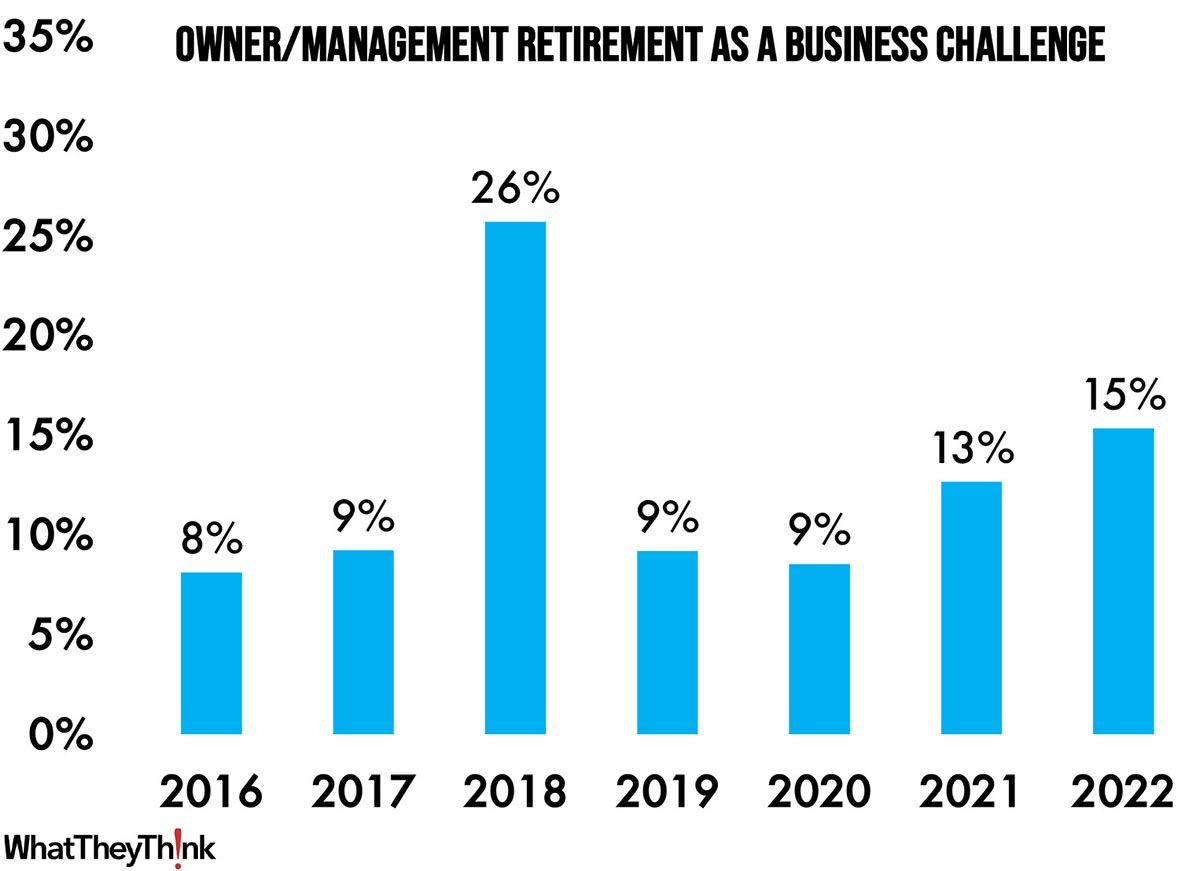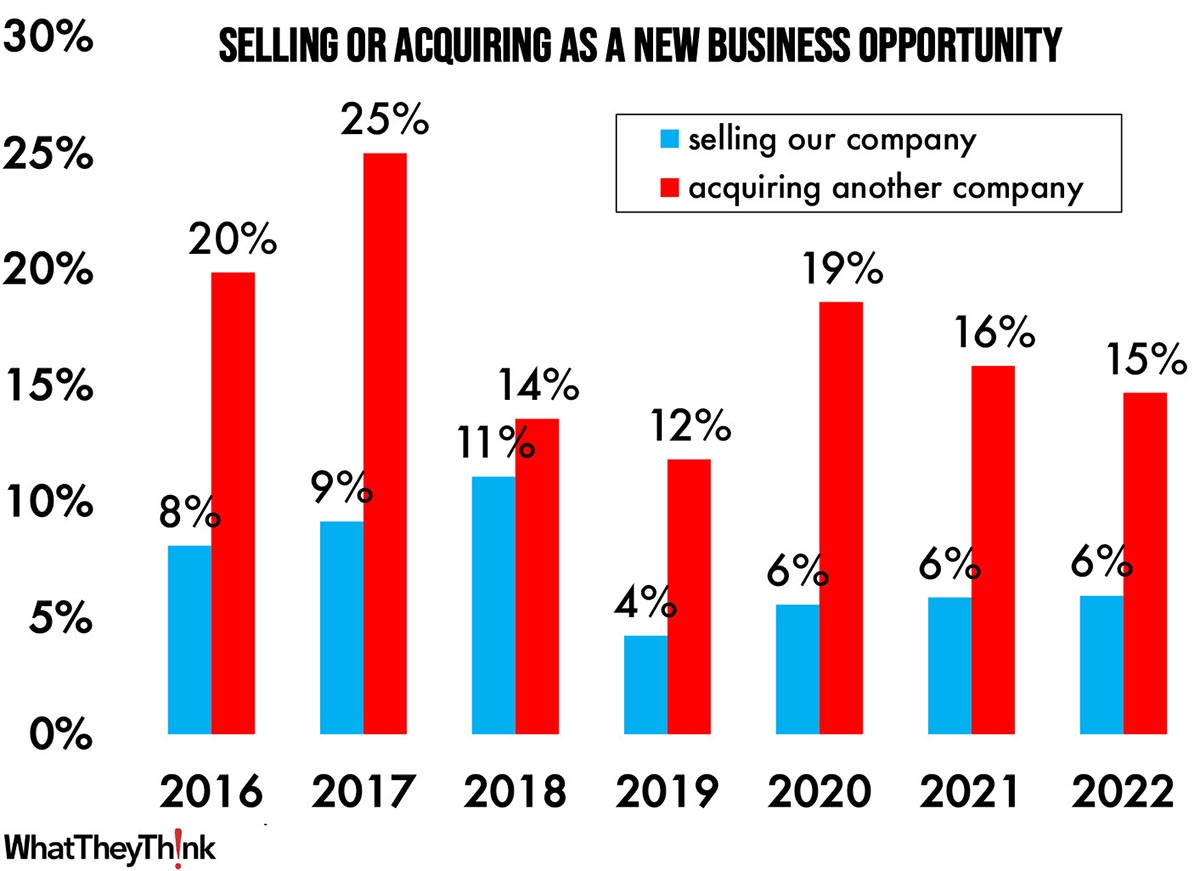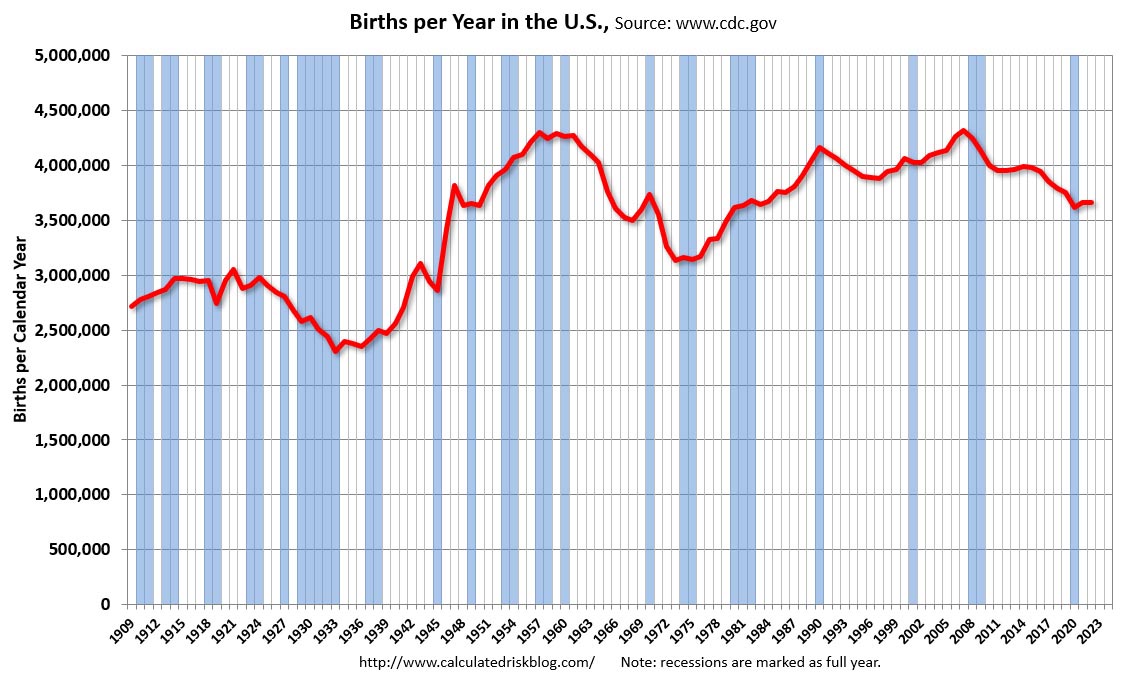Drawing on six years’ worth of Print Business Outlook surveys, our “Tales from the Database” series looks at historical data to see if we can spot any particular hardware, software or business trends. This issue, we turn our attention to leadership.
These surveys form the basis of our annual “Printing Outlook” reports, the most recent of which (2023) is available here. In every survey, we ask a broad cross-section of print businesses about business conditions, business challenges, new business opportunities and planned investments.
In our “Business Outlook” reports, we tend to focus (obviously) on the most recent survey data, occasionally looking back a survey or two to see how these items have changed in the short-term. Plumbing the depths of our survey database can give us a better sense of how these trends have changed since the mid-2010s.
If we take a look back into our database of Print Business Outlook Survey results, we note that in 2018, there was a spike in owner retirement—26% of survey respondents selected “owner/management retirement” as a business challenge—which then settled down the following year.
If you can remember 2018—which seems so long ago now—the industry had been on a resurgence over the course of the 2010s, and at the time we had remarked that 2019 was like a return to the good old days of the 1990s. So it’s entirely possible that a larger-than-usual cohort of print business owners and upper managers took the opportunity to retire.

This challenge declined for a survey, then in 2020 started an upward trend. We know anecdotally that, at least in the franchise networks, a fair number of franchise owners took the opportunity of the pandemic to retire, and now that the pandemic is generally over and the printing industry is back in the black, we could be looking at the next wave of print business owner retirements.
Another way of looking at this is via hiring plans; a question we ask in every survey. Figure 2 shows the percentage of print businesses that plan to hire staff in the next year who are looking to hire executive management.

Not that this number has ever been especially high, but it has started to climb after 2018—when owner retirement as a challenge spiked. Not that all print businesses always hire management from the outside—ideally, future managers, presidents and other leadership positions would be promoted from within, as they are the most likely to already understand the prevailing company culture. But that isn’t always possible.
Sometimes a business will respond to potential owner retirement by selling itself. Has that been the case for print businesses? Not really.
“Selling our business” has never been higher than 10% as a sales opportunity, and in fact in the 2018–2019 period it actually dropped. “Acquiring another company” has been of more appeal to print businesses, as a way of not only acquiring a book of business but also new capabilities. A lot of commercial printers acquired wide-format printing capabilities this way. It did spike in 2020 as there was a surfeit of print businesses that couldn’t make it on their own through the pandemic.

Acquiring a company can also be a good way to amass a new pool of potential leaders. As we have seen for the past few years, the ability to find new employees at all has become more challenging—and that will make it more difficult to groom the printing business and industry leaders of the future.
There is another long-term demographic trend that will also impact the ability to find employees and management. We wrote about this last month in our Friday data slice’n’dice feature. The National Center for Health Statistics released “Births: Provisional Data for 2022” and reported that “the provisional number of births for the United States in 2022 was 3,661,220, a nonsignificant decline from 2021.”

Source: CDC via Calculated Risk
Look at the period after the Great Recession of 2008. The U.S. birth rate started to drop and has continued through 2020.
Marco Boer of IT Strategies has been sounding the alarm on this trend for the past several years, and David Zwang brought it up in his Technology Outlook webinar.
Ultimately, what this means is that starting in 2026, substantially fewer people will be entering the workforce and, by extension, the printing industry. Ultimately, we’re looking at 500,000 fewer U.S. workers between 2026 and 2036. Add to that the aging of the current workforce, and if you were expecting the labor shortage problem to sort itself out…well, it’s only going to get worse.
On the plus side, the way automation—both hardware and software—is evolving, it may be the cure for the missing worker blues. So if you aren’t hiring robots now, you soon may be. And they may be running the company before long.
Which raises an interesting question. If that post-2020 line continues to go up and the birth rate returns to pre-recession levels by, say, 2036, with all the automation that is going to exist by then, will there be any jobs for the increased number of people entering the workforce after 2056?















Discussion
Only verified members can comment.